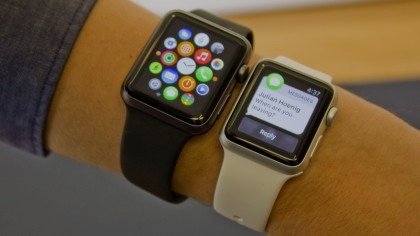
38mm Apple Watch Accounts For Less Than 20% Of Total Sales
Kuo also notes that over 80% of orders are for larger 42mm models, implying a male-dominated customer mix based on the assumption that 42mm and 38mm watches are mainly purchased by men and women respectively.
I believe that over 80 percent of orders are for larger 42mm models. (A cursory glance at the disparate waiting times between large and small models will tell you all you need to know about that.) I also believe there is a male-dominated customer mix, because early adopters of new tech historically and undeniably skew male. I don’t, however, believe that anywhere near four out of every five Apple Watch purchasers are by/for male users, because anyone who’s seen the 38mm and 42mm Apple Watches side by side know full well just how small the big one really is. Most gals will be able to wear that version no problem, and between its higher pixel density and better battery life, it’s going to be the superior choice for anyone who cares about that stuff. Those extras are worth the extra $50.
The major takeaway here is that, while Apple Watch is not a flop (revised sales figures notwithstanding), the 38mm version may not have been worth making for any tier other than Edition. If Apple insists on keeping it available across each line (and they pretty much have to at this point), the company’s going to have to widen the pricing delta to make upsizing less attractive to folks on the edge of tech sensibility and wrist size.
Of course, why settle for less profit when you can make more? Surely Apple knew that the 38mm Apple Watch wouldn’t sell nearly as well as the 42mm version, and production was probably neutered for the former from the start. Still, maybe all Apple really wants out of the smaller wearable is to get smaller folks’ wrists through the door so they’ll walk back out having ordered the bigger ones.